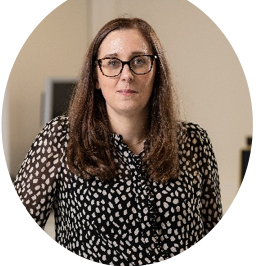Working Group 3
Extension to diseased situations
Objectives and Activities
The main objective of WG3 is to extend knowledge of in vitro colon models to diseased conditions in both humans and animals, ranging from dysbiosis to other parameters that shape the diseased gut environment.
Working group leaders


Lucie Etienne-Mesmin
WG3 Leader


Lidia Tomas-Cobos
WG3 Co-leader
Tasks
Overview on in vitro models adapted to reproduce gut microbiota dysbiosis associated to most common digestive pathologies (IBD, IBS, colon cancer…). Discuss the current limitations of these models in comparison to in vivo situations.
Extension of the potential of in vitro gut models to metabolic and non-communicable diseases (metabolic syndrome, obesity, diabetes, steatosis hepatis, coeliac disease…). The main objective is to maintain in vitro microbiota dysbiosis considered as a typical feature of these pathologies in vivo. The associated gut parameters should also be adapted to the specific diseased conditions (pH, transit time, bile acids profiles, nutrient availability...)
In vitro gut models can be used to simulate some facets of enteric infection by studying following pathogen inoculation, survival, virulence gene expression and its bilateral interactions with gut microbiota in both upper and lower tract in vitro models
In vitro models can be used to evaluate the impact of acute or chronic exposure to food pollutants (chemical, microplastics...) on gut microbiota composition and activity but also reversely the ability of gut microbes to metabolize compounds and modify their toxicity.
Pharma therapies and non-antibiotic strategies: evaluate the potential of different restauration strategies (of gut microbiota and metabolic perturbations), such as drugs (under various formulations), but also next generation restoration strategies including prebiotics, probiotics, postbiotics, live biotherapeutic products and fecal microbiota transplantation.
Deliverables
Submitted a literature review to identify available diseased in vitro gut models, their limitations and challenges. Due time at month 20
Guidelines on which parameters should be considered when developing a new diseased in vitro gut model. Due time at month 32
Report on training schools on the way to set up diseased in vitro gut models for young. Due time at month 36
Report on a public event to communicate to the scientific community newly available in vitro gut models adapted to diseased situation and present associated results on their development, validation and potential use to test remediation strategies. Due time at month 36